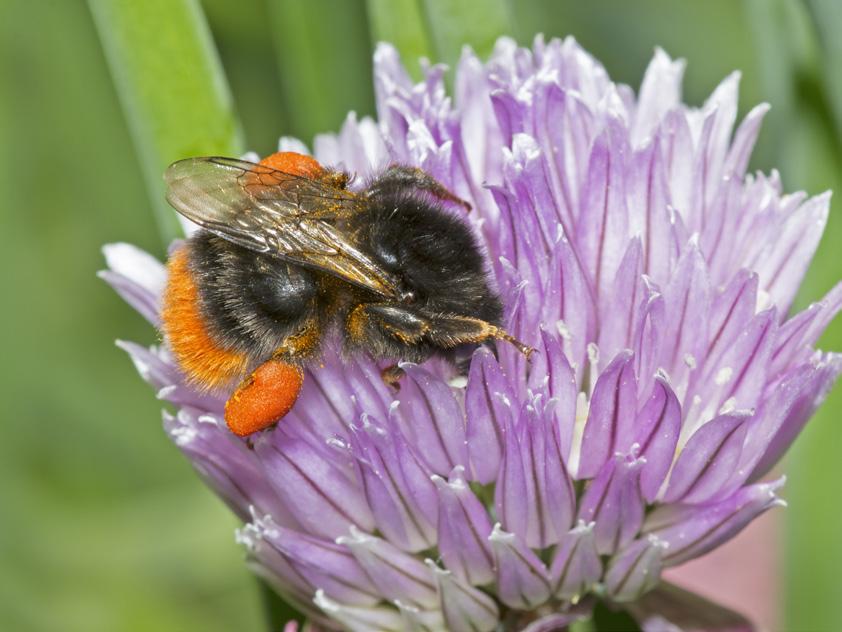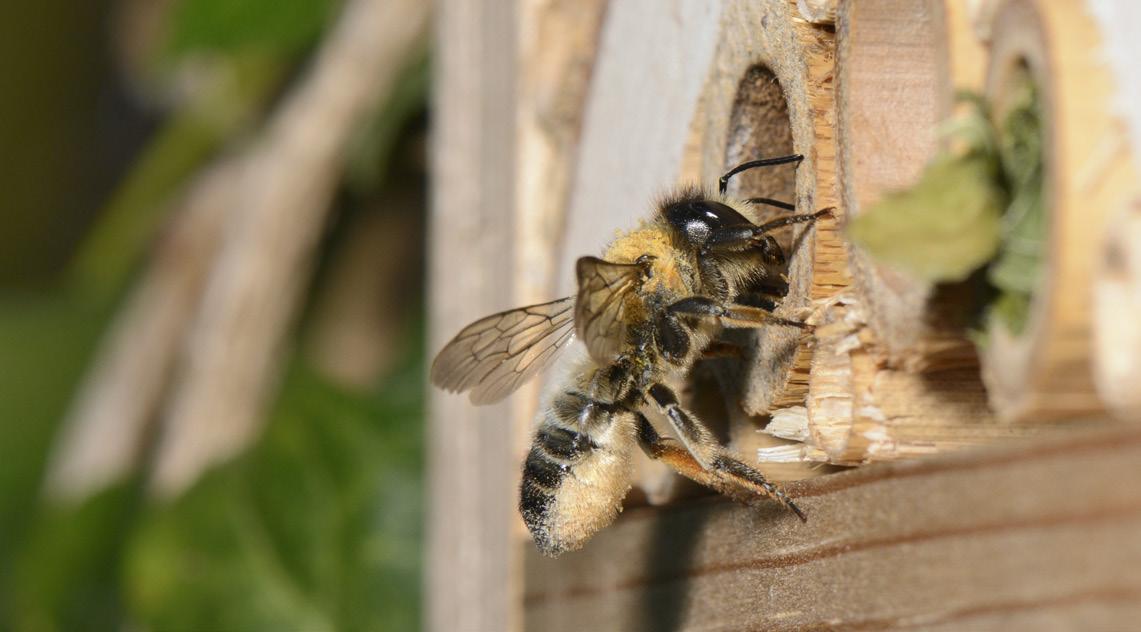
5 minute read
Buzzing about Bees
by Dales Life
Take a closer look at the bees visiting your garden – there may be more different kinds than you think
BRIAN PIKE REPORTS
Advertisement

Moss carder bee (Bombus muscorum).
No lazy summer afternoon in the garden would be complete without the mellow soundtrack of bees buzzing from flower to flower.
We all love bees – apart, perhaps, from folk unlucky enough to be allergic to bee stings. And we all appreciate how crucial bees are for pollinating our crops and flowers. But how much do we really know about them?
Most people can tell the difference between honey bees and bumblebees, but are surprised to learn that Britain is home to nearly 270 species of bee. They have a variety of different lifestyles, and range in size from the relatively massive large garden bumblebee to the small scissor bee, a bee so tiny that it nests in abandoned woodworm holes.
Many of these bees are rare, and likely to become rarer still if we don’t mend our ways. But to get an idea of how diverse a group of insects bees are, let’s look at some of the ones you might spot this summer. All Together Now Bees can be divided into two distinct groups: social bees and solitary bees.
Social bees live in large colonies whose members have different roles (queens, workers and drones). Whilst raising their young they make honey and beeswax, products humans have valued for thousands of years. They defend their nests fearlessly against intruders, first performing distinctive warning flight manoeuvres, then, as a last resort, deploying their stings.
Solitary bees, by contrast, don’t form swarms. Instead, females make individual nests in tunnels that they make or find. Once they have laid their eggs and stocked the tunnels with food for the hatchlings to eat, they play no further part in bringing up their offspring. They don’t defend their nests, and are highly unlikely to sting you.
Just because solitary bees don’t make honey doesn’t mean they aren’t valuable to us. Like social bees they are extremely efficient pollinators. Many species specialise in collecting nectar or pollen from particular kinds of flower, and there are thousands of species of plants that simply wouldn’t get pollinated without their help.

Hairy-footed flower bee (Anthophora plumipes) feeding.
Bumblebees, Old and New Our most conspicuous, best-loved bees are the large furry bumblebees that crisscross our gardens from spring until early autumn. Bumblebees, like honey bees, are social insects. But whereas honeybee colonies number up to 50,000 individuals, bumblebee colonies contain a modest 20 to 400.
Bumblebees, research shows, are far more efficient crop pollinators than honey bees. This makes some of the past actions of UK farmers – drenching crops in neonicotinoid pesticides, grubbing up hedgerows, and spraying field margins with weedkillers that kill the wildflowers that sustain bees outside the crop-flowering season – seem irresponsible and self-defeating.
There are some 25 species of bumblebee in Britain. They’re not always easy to tell apart, but you’ll find a good identification guide at bumblebeeconservation. org. Both the white-tailed bumblebee and the red-tailed bumblebee are common garden visitors. They nest underground, often in old rodent burrows beneath south-facing walls.
Unlike these smart, stripy bees, the common carder bee is ginger all over with just a dusting of black hairs. It usually builds its nest in tussocky grassland, collecting moss and dry grass to cover it over. Carder bee numbers have been particularly hard hit by intensive agriculture and loss of habitat.
A newcomer to look out for is the tree bumblebee, which has spread as far north as the Scottish Highlands since it was first spotted in Wiltshire in 2001. It’s easy to identify by its ginger thorax, black abdomen and white tail. The tree bumblebee likes suburban gardens and often makes nests in abandoned bird boxes. Masons, Miners and More Let’s turn to solitary bees, of which there are well over 200 species. One of them – and one of the first bees to emerge in spring – is the hairy-footed flower bee. It looks rather like a small bumblebee, but has a distinctive darting flight pattern. The hairy-footed flower bee nests in clay or mud slopes, and is fond of primroses, dead-nettles and comfrey.
There are seven species of leafcutter bee in the UK, and you can tell they have visited your garden even if you never actually spot them. When a female leafcutter bee finds a suitable nest site – usually in an old log or dead flower stem – she starts to cut out small circles from the leaves of nearby plants. She carries these back to line and seal her nest tunnels. Rose leaves are a favourite target, but the holes left by leafcutter bees are so clean-edged and neat that it’s impossible to begrudge them the small amount of damage they do.

White-tailed bumblebee (Bombus lucorum) leaving underground nest.

Large red-tailed bumblebee (Bombus lapidarius) on chives.

Leafcutter bee carrying a leaf to nest.

Ivy bee (Colletes heredae) feeding on ivy flowers.
Other solitary bees specialise in different construction techniques. Mason bees use mud, clay or grit to construct their nests. Mining bees dig small burrows in the ground. Plasterer bees use their saliva as glue to make waterproof tunnels in sand. Carpenter bees use their powerful jaws to chew tunnels into dead wood. All are excellent pollinators and deserve to be encouraged. Better Late than Never Finally, make a note to look out for one of the last British bees to be seen at the end of the year, the ivy bee.
As its name suggests, the best place to find it is on clumps of ivy, whose nectar-rich flowers open from September through to November. Ivy bees look like small honey bees, with orange thoraxes and clear black and orange bands on their abdomens.
Like the tree bumblebee, the ivy bee was first seen in Britain in 2001 and is now spreading north, albeit at a slower pace. Recent sightings have been made in York, Leeds, Skipton and Saltburn. If you spot ivy bees locally, why not help trace their spread by adding your own sighting to the Bees, Wasps & Ants Recording Society database at bwars.com?






